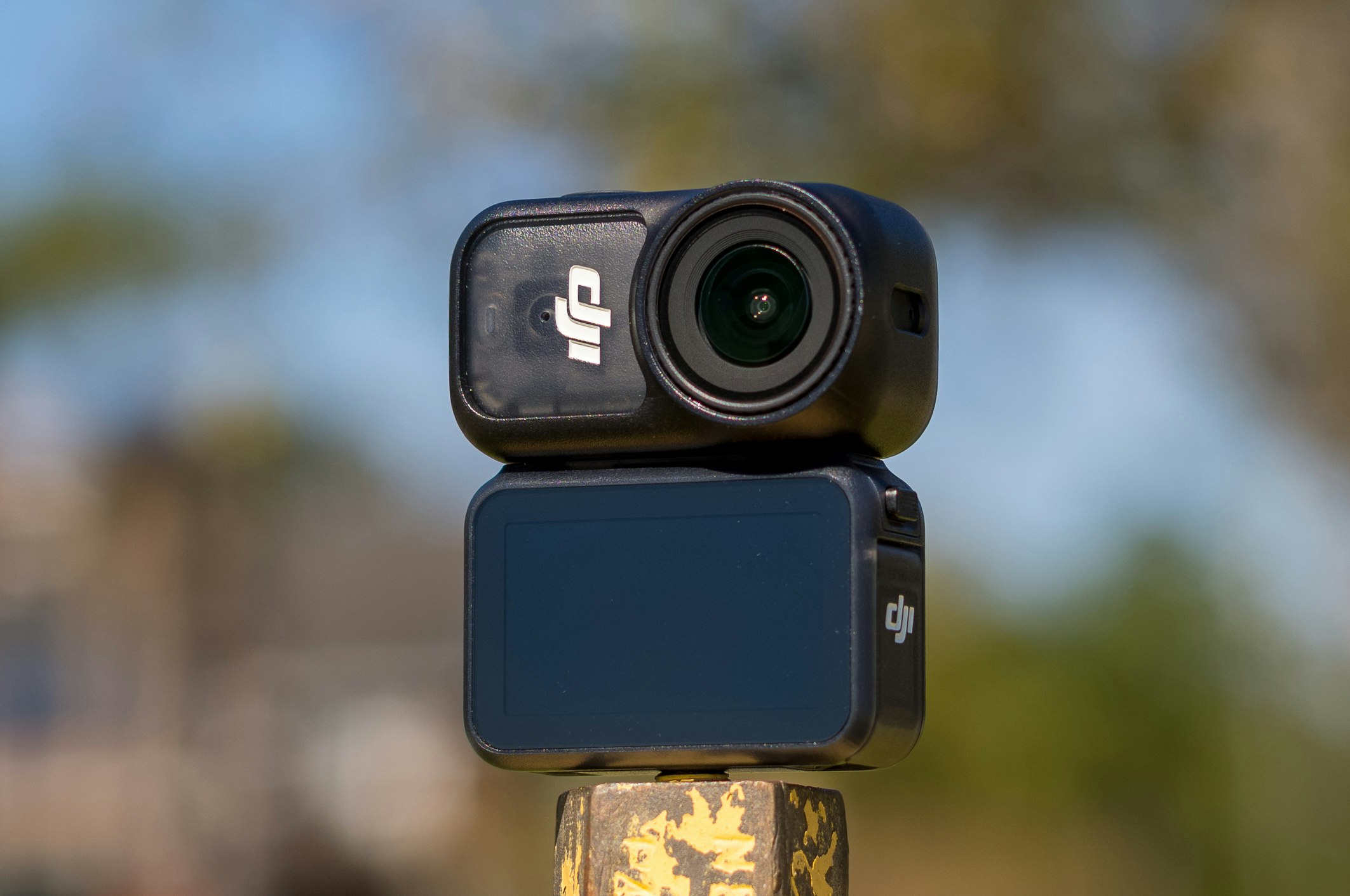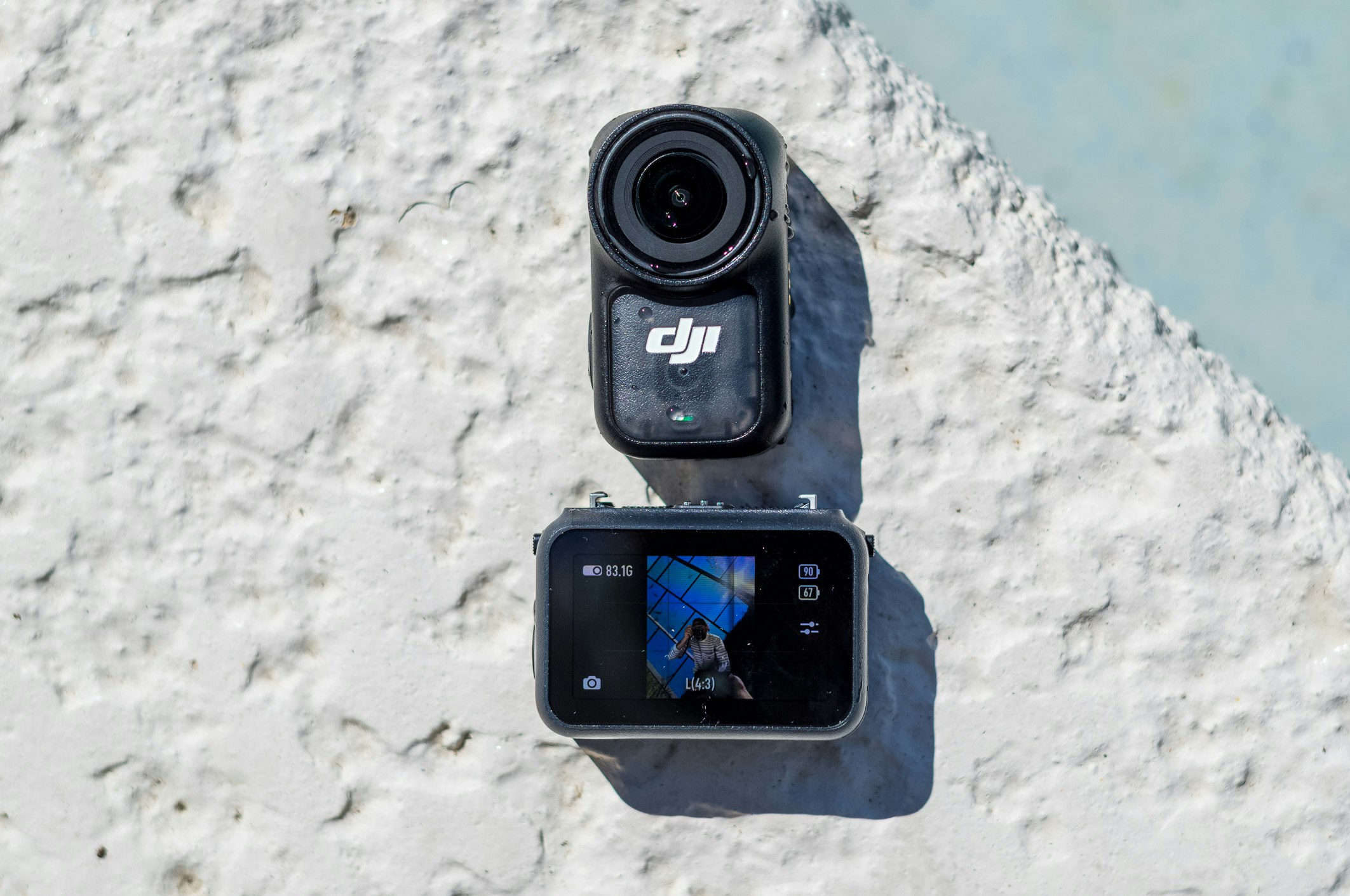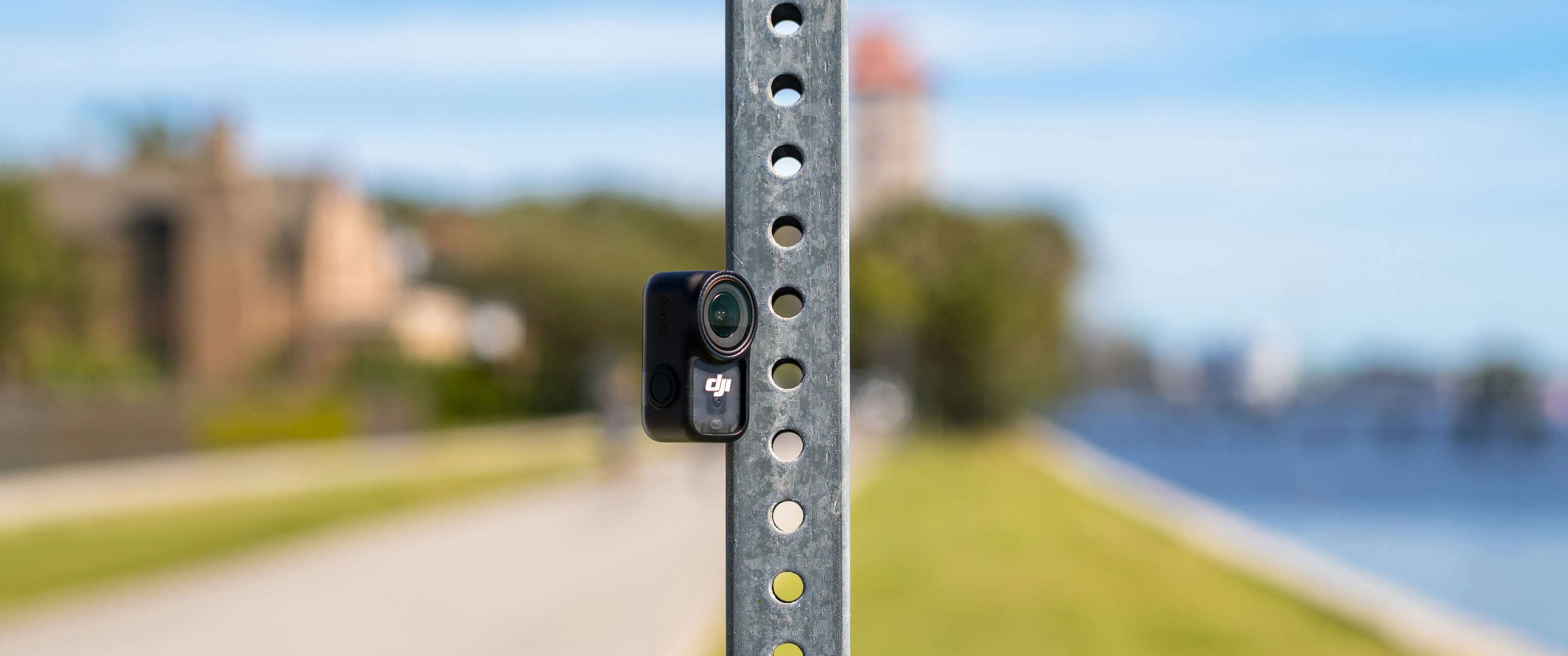
Quick Note: Content in this post was made with the camera right out of the box using the accessories provided, auto settings only, no special rigs or post-production.
What Makes This Camera Great
Size - This camera is unbelievably small: weighs just ~52 g, measures about 57 × 29 × 28 mm, and clamps magnetically onto helmets, clothing, bikes, toy cars, pizza peals — you name it.
Speed - it really is quick to mount and place for that extra angle or additional footage and with the Vision Dock, you can frame your shot, hit record and let it go and then quickly reset again as needed.
Seamless Connectivity w/ the App - Automatically connects and you can see your shots quickly, download, edit, export etc.
Internal Storage - We're using the 128G and still have loads of room even after capturing footage for this post. There is a slot for an additional card if needed.
Auto Settings - once you select the right ones (we added the best later in the post) then there's little to no need to manual adjust or change things up for simplicities sake.

What's Inside The Camera
Sensor: 1/1.3″ CMOS
Lens / FOV: f/2.8 aperture, 143° ultra-wide
Electronic Shutter: (Video) 1/8000s to the limit of frames per second (Photo) 1/8000-30s
Focal Range: 0.35 m to ∞ focus range
Video: 4K (16:9) up to 60 fps; slow-motion up to 4K/120fps in some modes
Color / Profiles: 10-bit, D-Log M. Great for post-grade
Max Video Bitrate: 120 Mbps
Dimensions & Weight: ~57 × 29 × 28 mm; ~52 g camera body
Mounting / Design: Dual-sided magnetic interface, modular pairing with Vision Dock
Battery / Endurance: Camera only you’ll get decent runtime; with dock combo up to ~200 minutes
Waterproofing: Camera is waterproof to 10m; the dock is splash-resistant (IPX4)
Out of the box accessories: Hat clip, lanyard / shirt clip, suction cup mount, plastic cover for the camera only
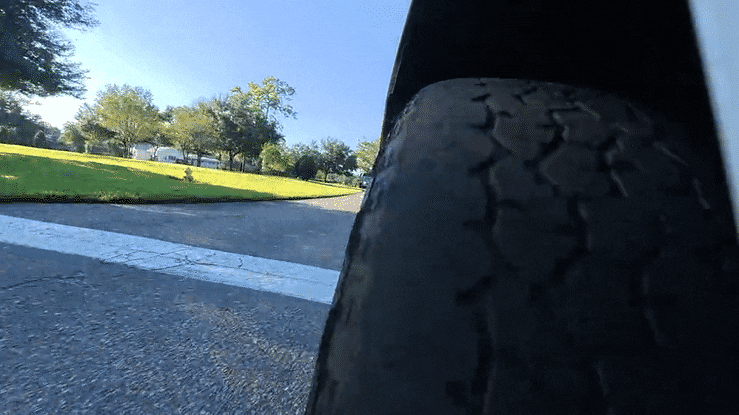

The Multifunction Vision Dock
The modular design (camera + Vision Dock) means you’ve got a built-in touchscreen, charging station, file-transfer hub and rapid mount system. It's basically a pocket size client monitor. All settings can be updated using the Vision Dock which makes this system half of the appeal. The wireless transmission distance range between the Multifunctional Vision Dock and the camera is ~ 10 m although I found this to be on the higher end of the range.
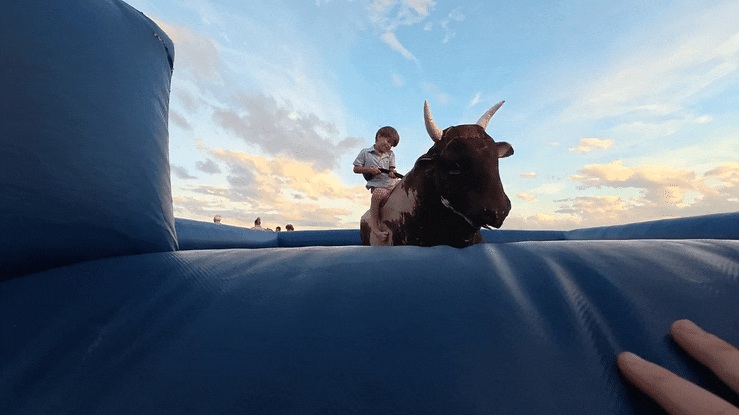
Ways to use it for content & storytelling
POV sequences: Strap the Osmo Nano to a helmet/bike/skateboard/actor to capture immersive first-person perspectives. The ultra-wide FOV brings the viewer into the action.
B-cam/hidden cam: Use it to capture alternative angles—behind the subject, under a table, inside a car or pizza oven—while the main camera runs elsewhere. Tiny size means you can hide it or place it discreetly.
Motion/rack shots: Mount it magnetically to a shopping cart, moving vehicles, drones, zip-lines or handheld rigs for dynamic motion footage. The stabilization system (RockSteady + HorizonBalance) smooths it out.
Environment & storytelling set-ups: For lifestyle shoots—say, a day in the life of an athlete, or a travel piece—the freedom to shoot from unconventional angles (chest mount, backpack strap, barbell) gives you unique visual texture and narrative depth.
Social & vertical content: Because it’s so flexible, you can switch from horizontal to vertical easily, mount it on your shirt for walking interviews, or get creative with b-roll for Instagram/TikTok using short clips. It's also great for creating GIFs like we did in this post.
Time-lapse / hyper-lapse / creative cut-aways: Use the compact rig as a time-lapse cam anchored in hard-to-reach locations (ex: roof edge, under canopy, tight corner) giving you shots that stand out. These shots we do recommend getting additional lens filters like graduated NDs and/or polarizers.
Behind-the-scenes / documentary style: In studio or production environments, use it to capture behind-the-scenes moments without tethering large gear — candid, real, immersive. We are going to use this camera mounted on a BTS stills camera during out productions and let it run. The audio it captures is not bad at all for social and the DJI mics sync up perfectly.
Sound integration: If you’re using external mics (especially if you’re already in a DJI ecosystem), hooking up wireless mics is streamlined. That means audio quality can match your image.
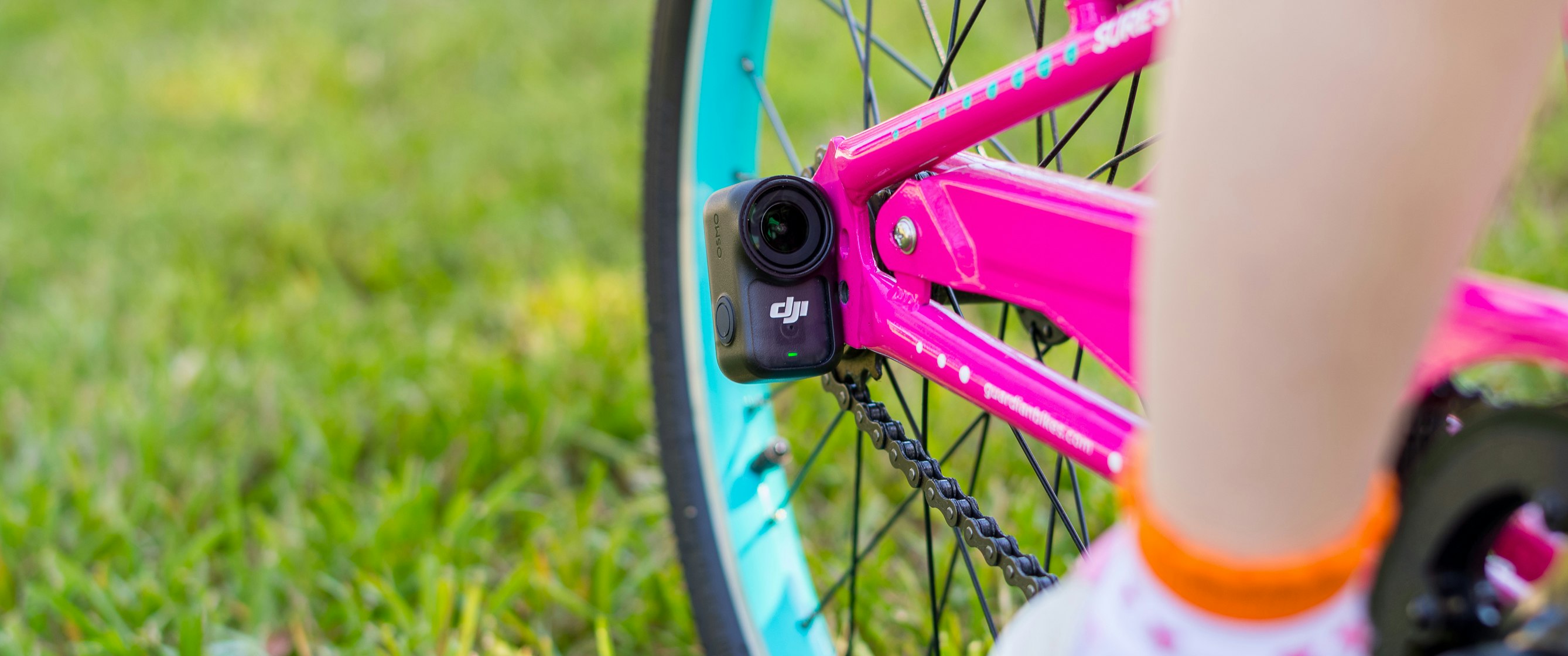

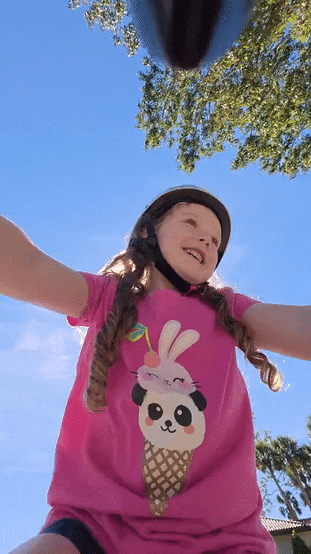

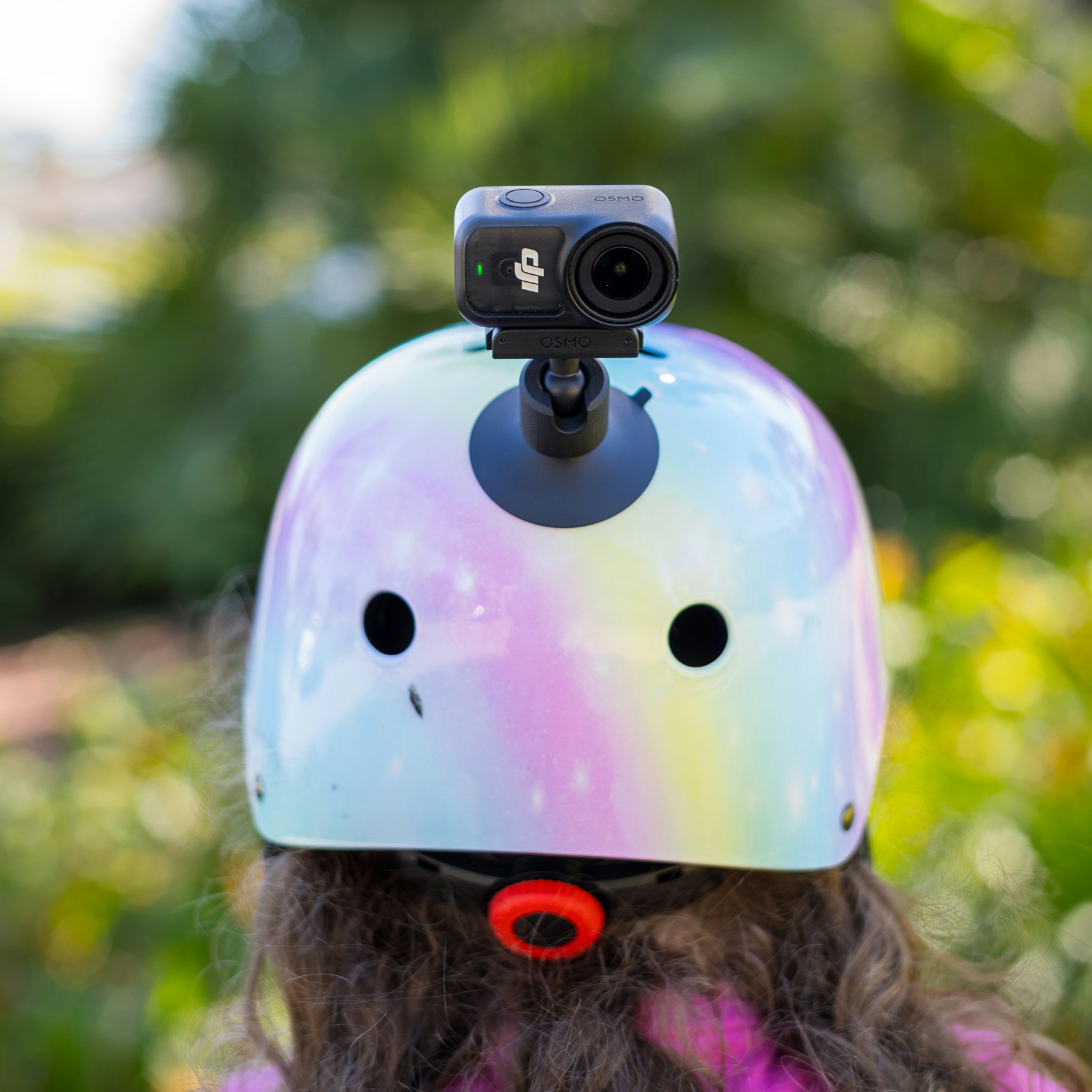
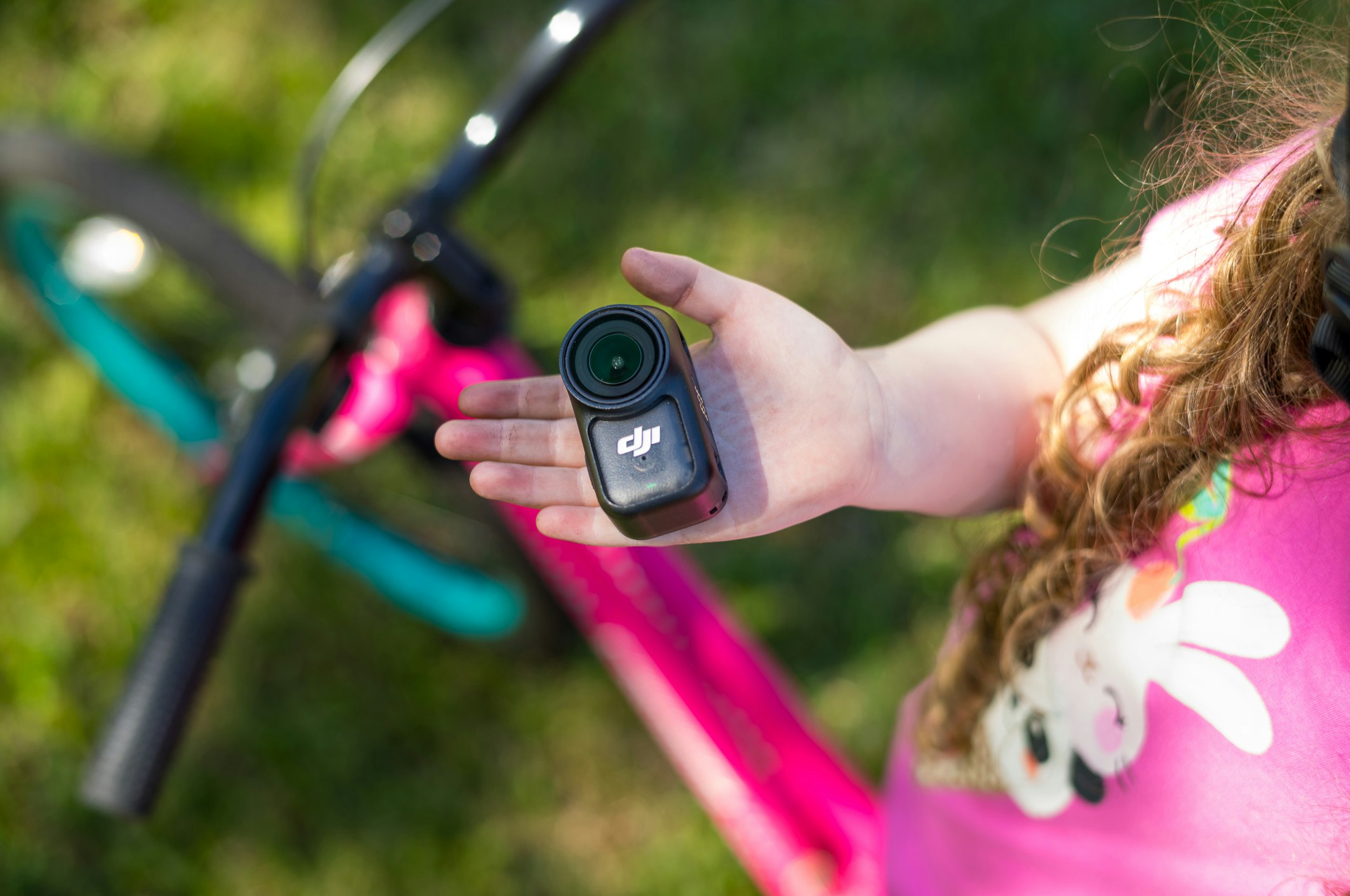
Pros
Ultra-light & wearable: You won’t even feel it. Excellent for mounting on helmets, gear, or even clothing.
Cinema-grade image in micro form: With 10-bit + D-Log M, you can do serious color grading; perfect for high-end workflows.
Versatility of placement: Magnetic mount system is fast, flexible, minimizes rig times — ideal for behind-the-scenes, b-cams, POV.
Production value in small form: You get many features of much larger rigs—4K60, high bit depth, modular accessories—without the hassle.
Great for storytelling: Because you can get it in angles that are impossible or impractical with larger cameras (e.g., mounted on an actor, vehicle, drone rig, pet collar) you open up unique visual storytelling possibilities.
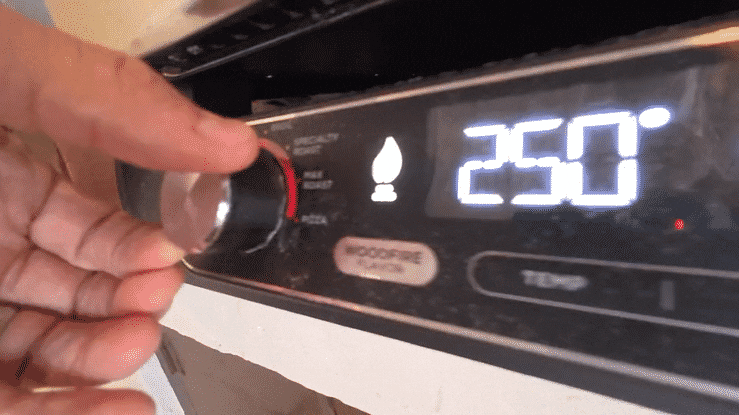

Cons
Battery life / temperature: 4K @ 60fps, especially when recording long clips, will drain faster than larger systems. We found ourselves charging often. We also found that it gets pretty hot fairly quickly, especially the camera but apparently DJI is working on this via a firmware update.
Limited zoom / lens versatility: Ultra-wide 143° FOV is fantastic for environment/action, but if you need telephoto or tighter framed shots you’ll need another camera, full stop.
Low-light performance: This is still constrained by it's size. As with all tiny sensors, there are trade-offs; while it’s impressively capable, it won’t match a full-frame cinema camera in dim light. Not even close.
Vision Dock Screen: The small screen on the dock (1.96″) is super handy but not as large as dedicated field monitors; menu navigation take some time to get used to and a little cumbersome at times.
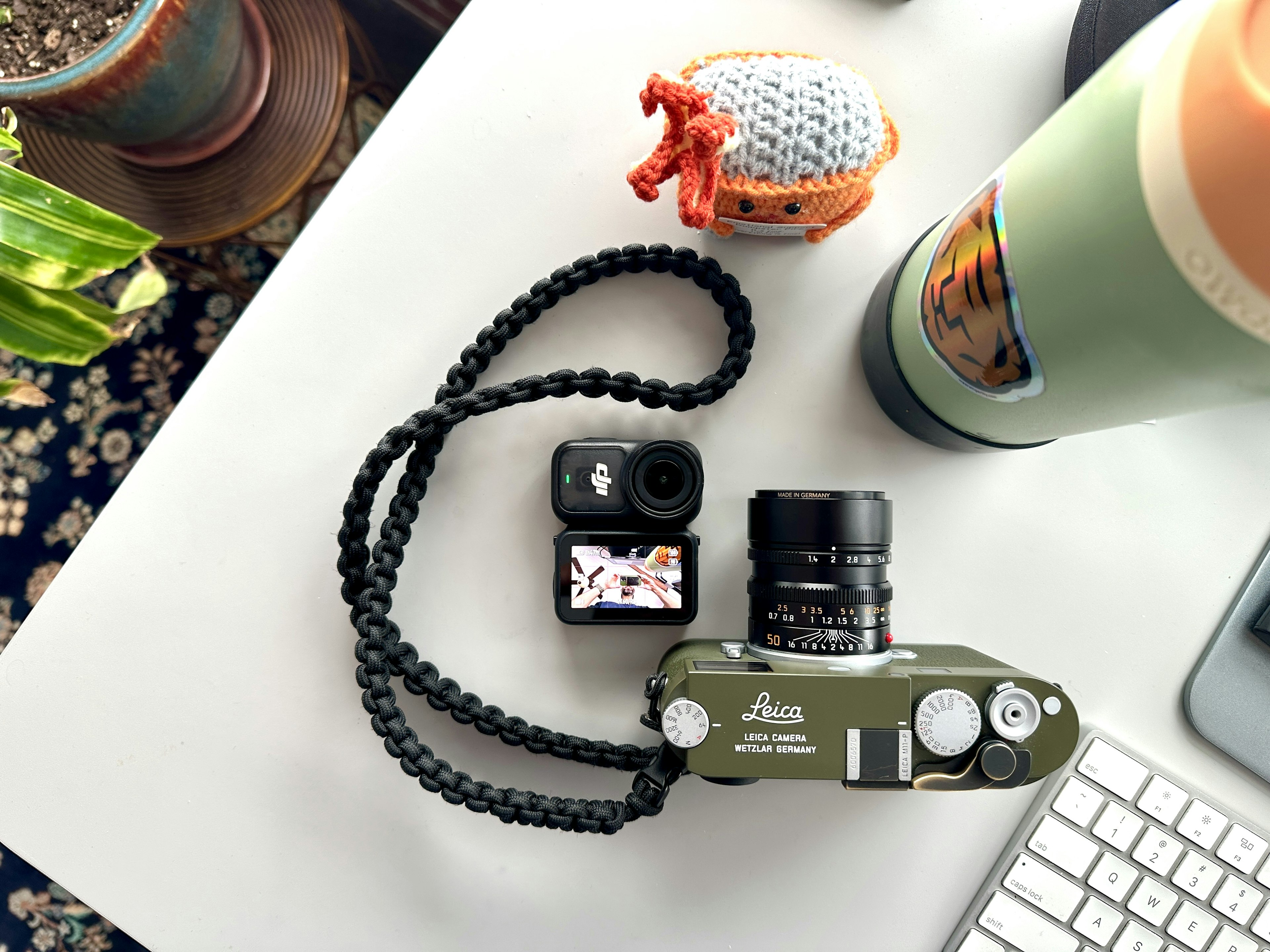

Recommended Settings for Best Video Quality
Video Option 1: 4K (4:3): 3840 × 2880 @ 24/25/30/48/50fps
Video Option 2: 4K (16:9): 3840 × 2160 @ 24/25/30/48/50/60fps
Stabilization: RockSteady 3.0
Color Profile: 10-bit color with D-Log M profile

Conclusion
In a production context, the DJI Osmo Nano delivers big-camera capability in a micro-package. It’s the kind of tool you take with you and pull out when you need flexibility, creativity, and unique vantage points especially when bringing a full cinematic setup isn’t practical or would interfere with the scene/set. For the cost, it's pretty much a must have for content creators, in-house creative teams and production studios doing their own marketing / social.
The size and speed is the biggest advantage. Pull it out to capture that extra unique shot on the fly that may or may not make it into the final cut. Take some chances / risks to see what works and what doesn't. Think of it as a secret weapon. When you need that interesting angle you didn’t think of originally, when your talent is moving, when you want to tell the story from their perspective or place a cam where no one will notice, this is the tiny rig to use
Like any tool, it doesn’t replace a main camera; it's complementary depending on creative direction and needs. Use it where large or technical rigs don’t fit, and use your standard gear where they shine. The Nano gets you shots you simply couldn’t get otherwise and that’s where storytelling magic happens.
